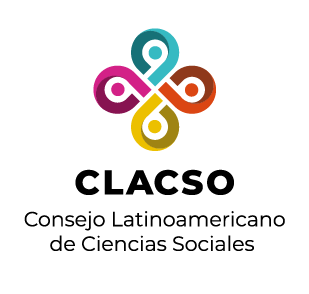Red de Bibliotecas Virtuales de Ciencias Sociales en
América Latina y el Caribe

Por favor, use este identificador para citar o enlazar este ítem:
https://biblioteca-repositorio.clacso.edu.ar/handle/CLACSO/43855Registro completo de metadatos
| Campo DC | Valor | Lengua/Idioma |
|---|---|---|
| dc.creator | Damoradan Rajasenan | - |
| dc.creator | Augusto De Venanzi | - |
| dc.creator | Rajeev Bhaksar | - |
| dc.date | 2019 | - |
| dc.date.accessioned | 2022-03-17T15:42:27Z | - |
| dc.date.available | 2022-03-17T15:42:27Z | - |
| dc.identifier | http://www.redalyc.org/articulo.oa?id=36465118005 | - |
| dc.identifier.uri | http://biblioteca-repositorio.clacso.edu.ar/handle/CLACSO/43855 | - |
| dc.description | Despite the benefits accruing to the Kerala Development Model, the exclusion of tribal communities in the Western Ghats continues to be a policy concern. While the Modelwas able to uplift the living conditions of large segments of Keralas population, it is also responsible for producing high levels of economic and social and inequality in the state. The central government and the states of India have put in place a number of distinctive schemes and programmes aimed at improving the livelihood of tribes regarding food security, housing and self- empowerment. The object of this paper is to evaluate the impact of these development programmes by looking at two related issues. First, we looked at the utilization rate of development funds. Second, we collected information regarding the beneficiaries own perceptions of the impact of development plans. In order to gather this information, we applied a survey to a sample of 200 households in the tribal Districts of Wayanad and Idukki. We conclude by arguing that the utilization rate of development funds in Kerala is overall inadequate, and by pointing to a series of concerns beneficiaries held in relation to the day-to-day functioning of development plans. Increasing the utilization rate of development funds and attending the concerns raised by tribal communities in respect to the way plans are implemented and managed, will surely work to improve the livelihood of tribal populations in the Western Ghats. | - |
| dc.format | application/pdf | - |
| dc.language | en | - |
| dc.publisher | Universidad Central de Venezuela | - |
| dc.relation | http://www.redalyc.org/revista.oa?id=364 | - |
| dc.rights | Revista Venezolana de Análisis de Coyuntura | - |
| dc.source | Revista Venezolana de Análisis de Coyuntura (Venezuela) Num.2 Vol.XXV | - |
| dc.subject | Economía y Finanzas | - |
| dc.subject | South Asia Studies | - |
| dc.subject | India | - |
| dc.subject | Kerala | - |
| dc.subject | Tribal Populations | - |
| dc.subject | Development Studies | - |
| dc.title | TRIBAL POPULATIONS IN KERALAS DEVELOPMENT PROCESS: AN IMPACT EVALUATION OF POLICIES AND SCHEMES | - |
| dc.type | artículo científico | - |
| Aparece en las colecciones: | Instituto de Investigaciones Económicas y Sociales - FACES/UCV - Cosecha | |
Ficheros en este ítem:
No hay ficheros asociados a este ítem.
Los ítems de DSpace están protegidos por copyright, con todos los derechos reservados, a menos que se indique lo contrario.